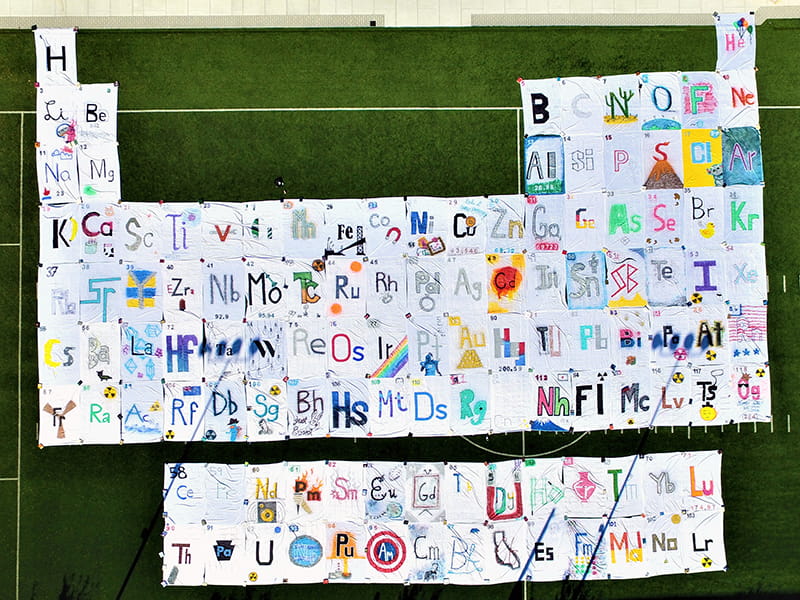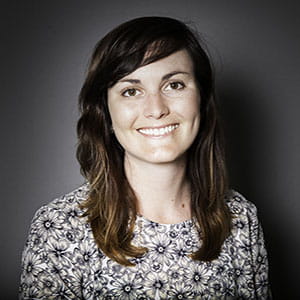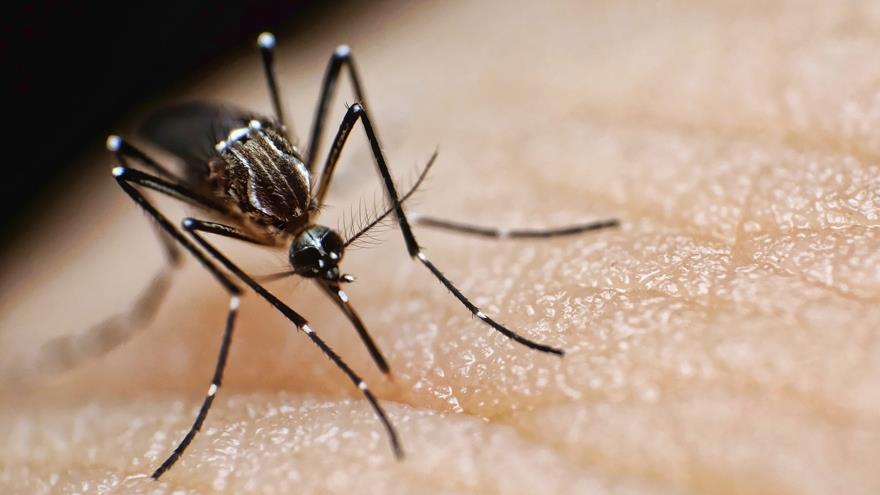Drexel Chemistry Students Unveil East Coast’s Largest Periodic Table

The Chemistry Graduate Student Association and the American Chemical Society Drexel Student Affiliates had a very important prayer for the afternoon of Oct. 24: A relatively clear day with little to no wind.
That’s because the student organizations chose that afternoon to showcase their 100-foot-tall, 135-foot-wide handmade periodic table, which was unfurled across Buckley Field in celebration of the International Year of the Periodic Table in 2019 as well as the American Chemical Society’s National Chemistry Week from Oct. 20 –26.
Despite obtaining their ideal weather conditions for the big reveal, the participating students still found themselves frantically dropping shoes and textbooks on the corner of each of the 118 white tablecloths embossed with elements of the periodic table.
DJ Hall, a chemistry PhD student and president of the Chemistry Graduate Student Association, also known as Chem GSA, walked around most of the afternoon barefoot while also adjusting sheets blown about by the wind, as well as directing participants and visiting camera crews from local news stations.
DJ Hall, a chemistry PhD student and president of the Chemistry Graduate Student Association, also known as Chem GSA, walked around most of the afternoon barefoot while also adjusting sheets blown about by the wind, as well as directing participants and visiting camera crews from local news stations.
Despite that group from Wayne State University in Michigan who created a larger display and used garden stakes to keep everything in place, the involved students at Drexel were very proud of their accomplishment, which Hall said was fellow chemistry PhD student and Vice President of the Chem GSA Pedro Amaral’s unprovoked idea, as well as his “child.”
“It took us six days to paint everything, staying until midnight. It took countless hours,” Amaral said. “We just had a bunch of tarps on the floor and people just showed up and painted their elements.
“We just wanted to make something that looks really cool. We never thought about.”
And, unlike the students from Wayne State, the student organizations involved with Drexel’s periodic table completed the project with no formal help from the Department of Chemistry. Instead, some faculty did chip in to pay for tablecloths or paint elements, but most of the work and the funding for the project came from the students themselves.
There was plenty of department support to go around during the big reveal, though. Several chemistry faculty members came down to Buckley Field on the 24th to congratulate students and see the finished product.
“It’s not like looking at a normal periodic table,” said Fraser Fleming, PhD, professor and head of the chemistry department in the College of Arts and Sciences, who pointed out that the table included not just the element symbols, but also atomic numbers and weights, as well as an artistic drawing that represented each element. “And these guys did it all themselves, that’s what’s so amazing. They came up with the idea behind them and had to make them all unique. I think it’s really fantastic, and it’s all their initiative, so I give them all the credit.”
They didn’t do it for the credit, however, or even for awareness about their organizations or their field of study, according to Amaral and Hall. And although they didn’t have a good reason of “why” outside of celebrating the 150th anniversary of Russian chemist Dmitri Mendeleev publishing the periodic table for the first time, Amaral and Hall were glad that the project brought their organization together with the undergraduate students in their department.
“We had undergraduate students who were first years and helped us do it,” Hall said. “In a way, we brought awareness through that.”
“They were really happy to help,” added Amaral. “It actually brought us together, the grad students and the undergrads, because we never have events together.”
“They were really happy to help,” added Amaral. “It actually brought us together, the grad students and the undergrads, because we never have events together.”
In This Article
Drexel News is produced by
University Marketing and Communications.

